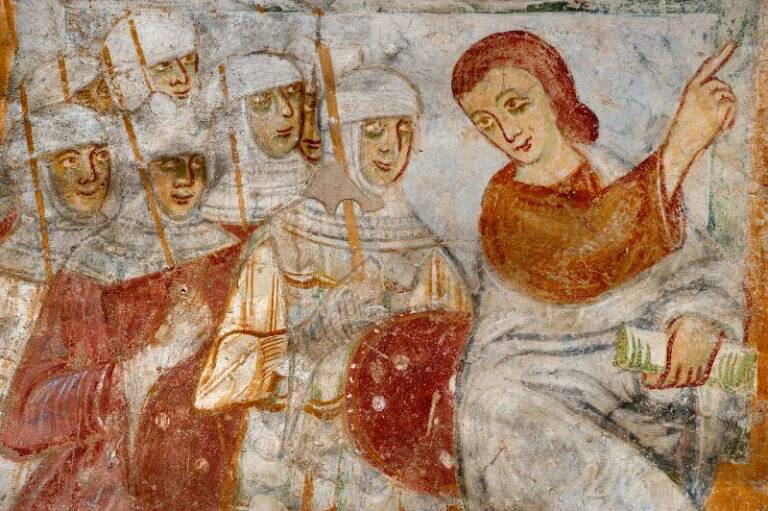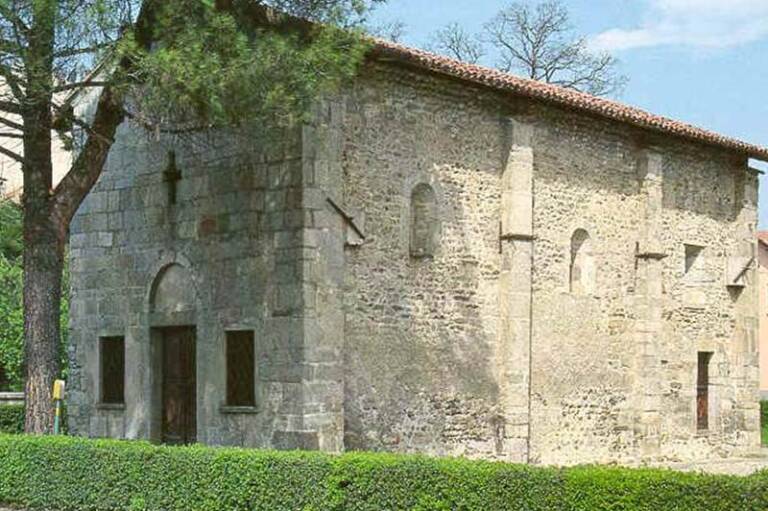It is the oldest church in the town and certainly the first parish church, already existing in the first half of the 12th century. Its importance can be deduced from the name given to the village, which was mentioned in the Carta di Romagnano (Charter of Romagnano) of 1198 as Burgus Sancti Leonardi, which existed before the Burgus Maynerius.
The Oratory is certainly the city’s most famous monument. It was built on the lands of the Marquises of Pombia, on the Agogna river crossing, between 1125 and 1150. It may have been a primitive hospice for wayfarers on the Via Francisca, but it was later transformed into a place of worship and dedicated to Saint Leonard, a French saint to whom the Marquises, who also came from France, were devoted.
Over the centuries, it underwent many transformations, including Baroque ones, at least inside. Restoration work began in 1955 and continued into the 1980s, freeing the church from the artificial interventions that had been made inside (the choir with the organ, the vaults, the bell tower…). The Oratory can be visited on Saturdays thanks to a group of volunteers.
The church, in Romanesque hut style, was frescoed in the 13th century by an unknown artist trained in the workshop of the Maestro di Angera (Master of Angera – apse and bays), and in the 15th century by the Maestro di Borgomanero (Master of Borgomanero – Madonna and Child, Trinity, Madonna of the Milk, Madonna with Saints Peter and Paul, Nativity).
The last fresco in chronological order is from the 16th century. It is the work by an unknown painter from Novara and represents the Madonna of the 7 Sorrows.
The original 13th-century frescoes depict Christ Pantocrator with symbols of the Evangelists, the twelve Apostles, the months of the year in the apse; in the first left aisle a series of saints; in the second right aisle, there is a wonderful ‘Last Supper’ with scenes illustrating the betrayal of Judas, soldiers, male and female saints. Some fragments of the martyrdom of St Bartholomew are still visible in the second left aisle.



